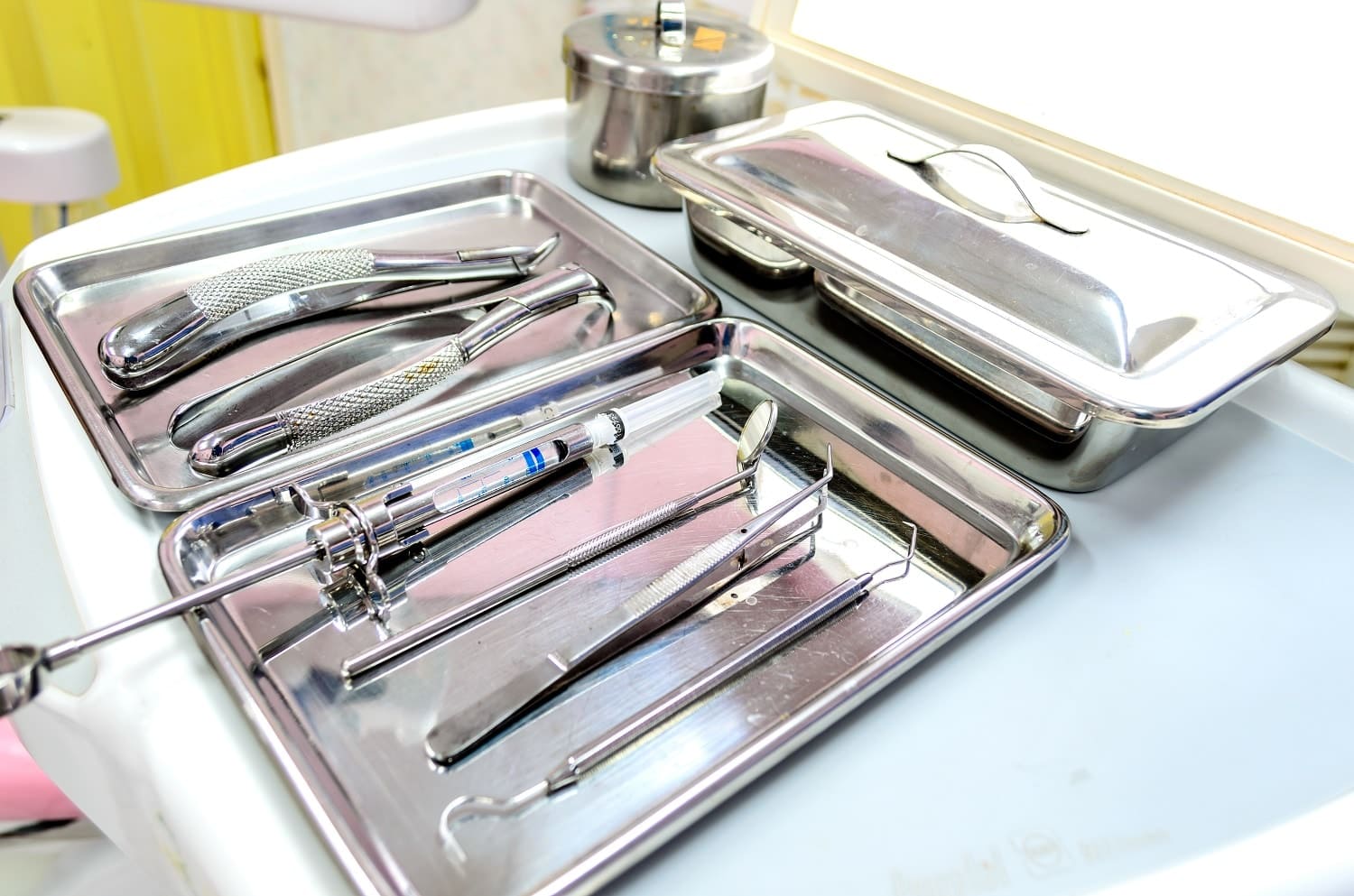A lancet is a sharp steel medical instrument. Using it, Jenner inoculated a healthy boy with cowpox. After a while, it became clear that the child’s body showed immunity to smallpox, as well. In the XIX century, this mechanism was named vaccination and distributed throughout the world.
At the beginning of the XX century, the lancet was replaced with a scalpel. This is probably the most famous steel medical instrument, which modern doctors use for operations, diagnostics and other procedures.
Why is steel used in medicine?
Steel is one of the few materials that combines several important properties: slight interaction with the human body or even its complete absence (inertness), hardness, durability and relatively low price. After all, medical services should be available in even the most remote and tiny communities in the world.
For the same reasons, there are many other items and equipment that are made of or use steel in hospitals and clinics: medical furniture, utensils, plumbing, etc.
When did steel come into medicine?
A few thousand years ago, ancient doctors used auxiliaries for operations, dentistry and other medical procedures. However, then, as a rule, a very hard obsidian stone served as the main material for the tools. It was only closer to the Middle Ages that metals began to appear more often in medicine, particularly instruments made of iron. But they were not of very high quality and their chemical composition did not meet modern hygienic requirements. Such instruments were oxidised and could have a negative impact on the human body during contact with organs and open wounds. Often, they injured more than helped.
Steel instruments only became widespread after the production of stainless and special steels was mastered at the beginning of the XX century. Their number and scope grew. For example, medical stainless-steel instruments were firmly fixed in surgery. It is believed that about 1% of all stainless steel produced in the world is used in medicine.

Almost every one of us has seen a film scene about doctors. An operating room, a bright light, a group of doctors in masks and gowns bent over the patient. The situation is very tense, which is usually emphasised by suspenseful music. “Scalpel! Forceps! Scissors! Clamp!”, the commands of the chief surgeon sound clearly and calmly. To escalate the drama, a few drops of blood appear on the screen ... And now the patient is saved! An important role was played by instruments made of surgical steel, which are grouped according to their main purpose:
- cutting (e.g., scalpel)
- piercing (e.g., syringe needles)
- clamping
- pushing aside
- probing
All detailed information about the requirements for tools and the marking of medical steel from which they are made can be found in government standards. For example, DSTU GOST 30208:2003 (ISO 7153-1-88) “Surgical instruments. Metallic materials. Part 1. Stainless steel” or DSTU GOST 22090.1:2004 “Dental rotary instruments. Part 1. Steel and carbide burs”.
In truth, there is no definition of surgical steel or medical steel! This is most probably an advertising stunt that even kitchen equipment manufacturers use to emphasise the quality of spoons, forks and pans. Although in fact, dishes made from high-quality food-grade stainless steel, and not the so-called medical grade, retain their appearance longer. More on that later.
Requirements for medical steel
Medical instruments made of special and stainless steels must meet certain requirements: resistance to small plastic strain, hardness and wear-resistance. They must resist corrosion, meet stringent hygienic requirements (enter into minimal contact with the body and withstand the sterility requirements) and not lose their properties after one or two uses. However, disposable scalpels and syringes are used more often.
To comprehensively meet stringent requirements, medical instruments should not be made of ordinary steel grades, but special or stainless steel, which contain alloying additives that affect the characteristics of the finished product, depending on its application. In addition to iron, nickel and chromium are the main components of stainless steel. Their characteristics must be considered when using other additives. Otherwise, the instruments can shine brightly but cut poorly.

What else is added to high-quality special steels for medicine?
Molybdenum-chromium steel is used for high-strength instruments and medical utensils that can be sterilised repeatedly, for example – such products are resistant to mechanical damage and high temperatures. Chromium-nickel steel has a high resistance to oxidation and can therefore be used in medicine, where there is an aggressive acid-base environment.
Austenitic, martensitic and ferritic stainless steel is most often used for medical instruments. These are high-strength materials that are easily machined. Products made of such steels have high resistance to corrosion and micro-cracks. But only under certain conditions: with appropriate heat treatment, polishing and use in environments corresponding to the alloy chemical composition.
Some medical instruments that do not have stringent requirements for corrosion resistance (scissors, saws, etc), can be made of unalloyed carbon steels.
Medical steel grades
With regards to specific steel grades, the Y7A, Y8A, Y10A and Y12A carbon instrument steel grades are used to manufacture medical instruments. The letter Y means carbon steel and the letter A stands for a high-quality steel grade. The number between them is the carbon percentage: 0.7%, 0.8%, 1% or 1.2%. Additionally, to protect against corrosion, carbon steel instruments are coated with a layer of nickel or chromium, so they have a nice gloss. But the cutting edge remains unprotected.
Chromium and nickel-chromium stainless steels are also used. In CIS standards, chromium grades are designated as 40X13, 30X13, 20X13, where the first number means the carbon content (0.4%, 0.3% and 0.2%) and the second one is chromium content (around 13%). Steels similar in composition and properties, but produced in accordance with other international standards, will have a different marking (for example, X40Cr13, SUS420J2, 4C13 and AISI 430). Steel grades AISI 304, 18/10 and 12Х18Н10 are the most popular among nickel-chromium alloys.
Medical instruments are continuously evolving and improving. Approaches to the diagnosis, prevention and treatment of diseases are also changing. Will stainless steel retain its role as the main material in this area? Indeed, even today, in complex operations like ophthalmology, for example, reusable scalpels made of transparent sapphires (leucosapphires) and ceramics are used. But these materials are very expensive. Therefore, they still cannot become a full-fledged replacement for steel instruments in other areas of medicine.
In addition, steel processing technologies are not standing still. For example, special protective nanocoatings have already been developed and are being introduced, which can trigger the self-cleaning mechanism of steel tools from bacteria.
An obvious conclusion presents itself: stainless and special steels will be used for a long time by surgeons, orthodontists and other medical specialists who protect the health and lives of millions of people.
